Jakob Sahner is a German photographer who excels in both landscape and deep sky astrophotography and produces images like this:
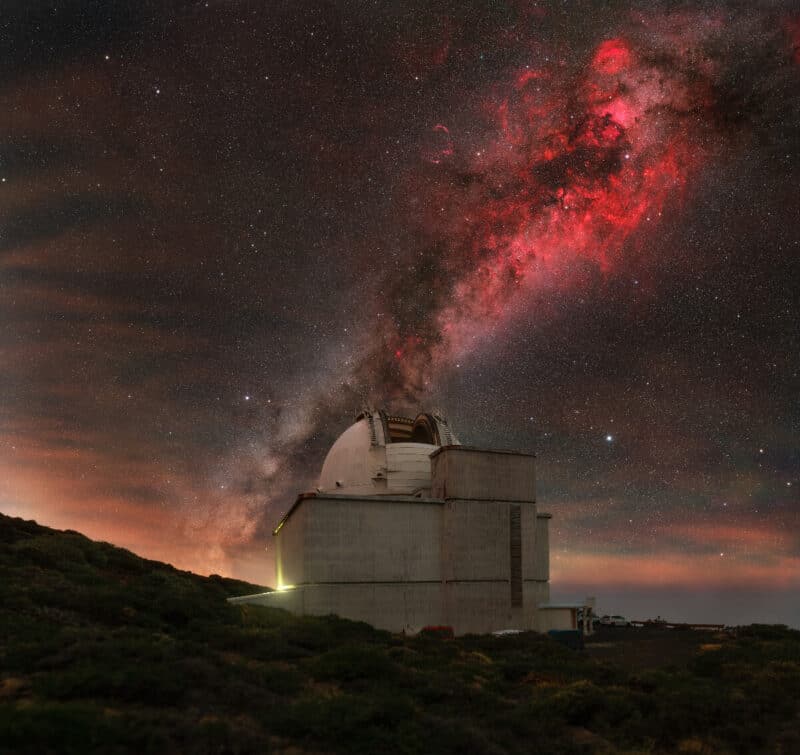
We discuss with him here how he plans his imaging, what gear he uses, his processing workflow, and his tips for others on how to improve. Enjoy!
What’s your current focus in astrophotography?
I have one goal each for deep sky and landscape astrophotography.
The main goal for landscape astrophotography is to get more creative with compositions and overall image aesthetic.
I would say that I’m at a good level on the image processing side but there are still a lot of small things that could be improved (at least for my personal taste).
My goal for deep sky is to slowly move to longer focal lengths (1500mm or longer) in the next 2-3 years.
The problem here is always money…I have some plans for that with a close friend in the future, but nothing is set in stone yet.
In the meantime, I would like to further improve my widefield work and capture objects I have never captured in detail or with a long exposure time.
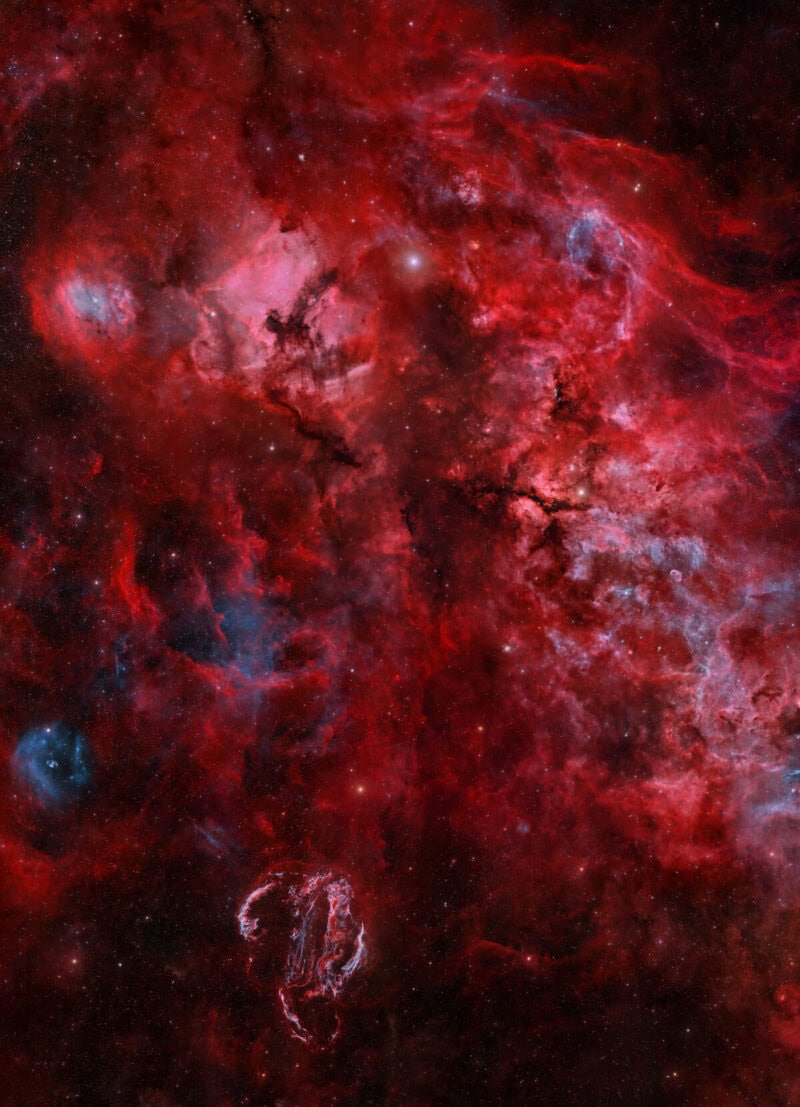
“I was looking for photography tutorials on YouTube and a video on astrophotography was suggested and I was immediately hooked”
How do you plan your imaging?
I’m based and born right next to the black forest in southern Germany.
It’s not the best place for astrophotography by far but it is a very good starting point and for central European standards its quite good.
We have a big forest area with mountains that go as high as 1500 meters that provide very good bortle 4 (and sometimes bortle 3) zenith skies.
When the weather and season is right, I can jump in my car and drive 2-3 hours to get in the middle of the Swiss Alps to have great bortle 2 skies.
Here in Germany you can only hope for good weather these days which makes planning in advance challenging. Over the years I developed a sense for the weather here and know what I can do when and where.
Landscape astrophotography especially can be challenging because the Milky Way core is right in the direction of the heavy light pollution of the big cities in Switzerland.
When the humidity is high you cannot expect world class results. But when the air is clear and dry the light pollution kind of fades away and you can get good details in the Milky Way.
When I plan my trips I use:
- Google Maps to scout the area roughly,
- Then I use Stellarium to get an idea of how the sky will look at any given time
- Finally, when I don’t know the area I use Planit Pro which has a nice 3D landscape feature where you can see the local landscape as a 3D projection with the night sky. This can help when you want to align the Milky Way or any object in the sky with a certain foreground element.
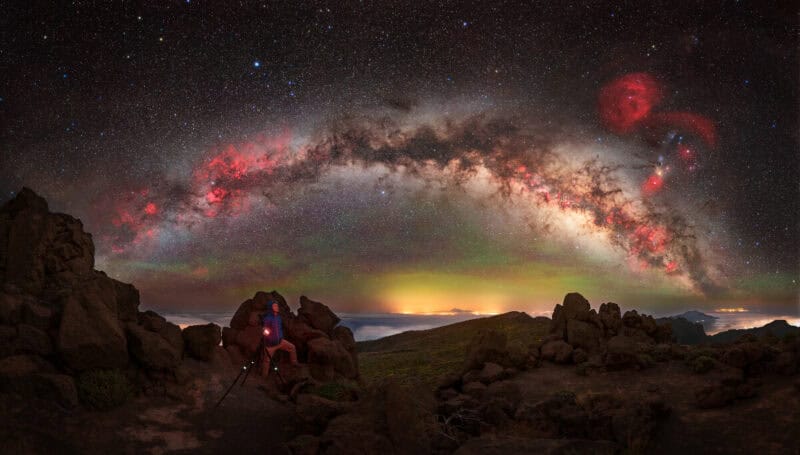
“I learned through inhaling everything I could”
What gear do you use?
For landscape astrophotography I use Alpha series cameras from Sony:
- Sony A7II – This was my first full-frame camera and I have had it in my backpack for 4+ years!
- Sony A7S – This was the next logical addition because it’s MUCH more sensitive to light and the noise performance is to this date unmatched when looked at a price-to-performance ratio.
- Sony A7III – Now my main camera and combines the best of the above two cameras in terms of megapixel count and noise performance. It also has “new” and highly welcome features like the bigger battery, new menu and a body with better usability at night.
All of these are astro-modified. I used Julien Steelandt from Astrolab Service in Germany for this.
I would love to switch to the new Nikon Z cameras in the future because you get better raw image quality and colors.
However, as I mentioned earlier, switching to new gear is costly and for now I can’t spend too much money on astrophotography…
My main lenses are from the Sigma Art series:
All of these lenses are very good performer and are quite cheap compared to the original Sony lenses.
I also have some lenses from Samyang/Rokinon like the old 35mm f1.4 and the all-mighty 135mm f2 which is a highly recommended lens for astrophotography!
I also use a Sky-Watcher Star Adventurer star tracker.
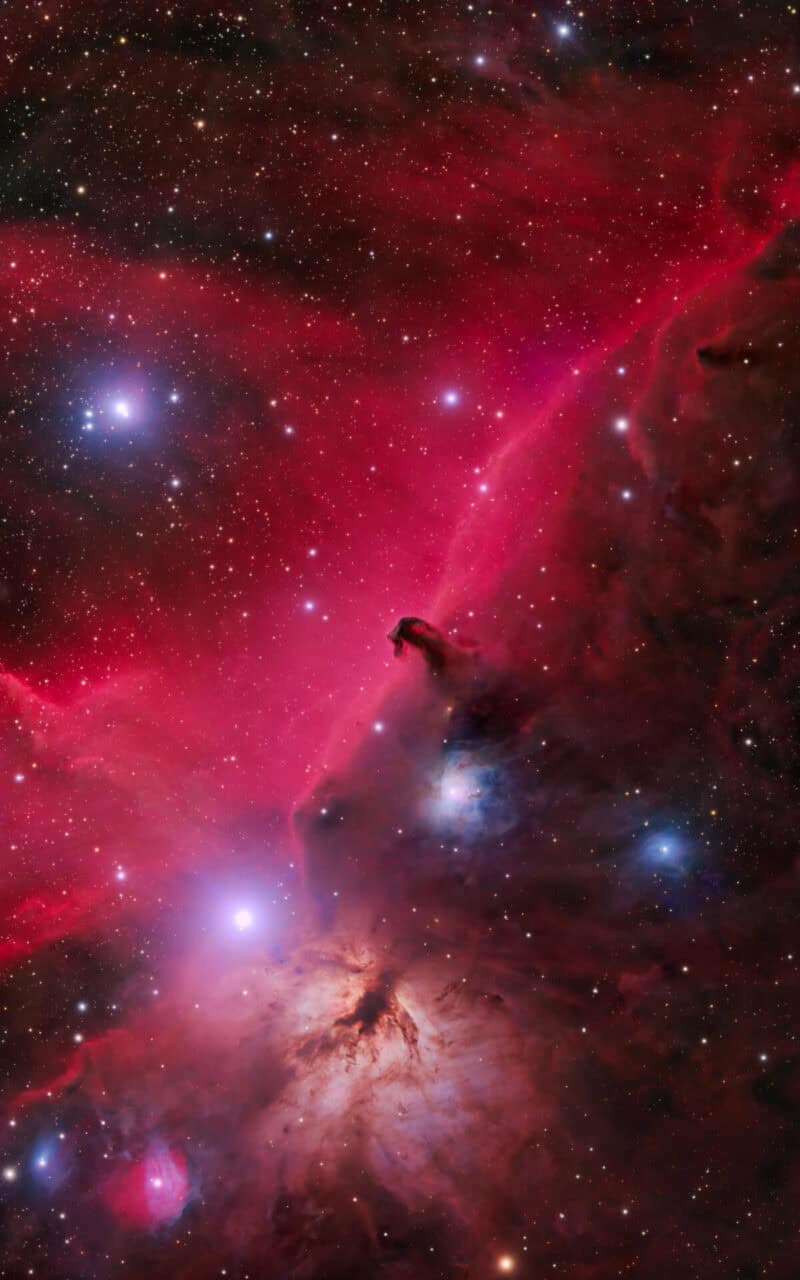
For deep sky, there is so much gear with accessories that I almost can’t list here but I can provide a general overview of my setup.
My main telescope is the Sky-Watcher Esprit 100 which I use combined with a 0.75x reducer.
On the back of the telescope is one of my favorite cameras of all time, the Moravian G3-16200 Mark II.
Some people would think “dude, that’s old CCD sh*t, go and upgrade for CMOS”!
But from my personal experience I can tell that for normal imaging the higher end CCD technology is still very good and some of my favorite images of all time from other photographers use this camera/sensor.
Is CMOS better? Yes, there is no denying that but it’s still very costly compared to an old used CCD camera.
My mount is the iOptron CEM70, I can highly recommend this mount for remote/observatory and travel use since its very light weight for the total load capacity it can hold.
All that is combined with different accessories like filters, focussers, flat panels and all that stuff.
I would like to get a fast galaxy telescope in the future, something like the Officina Stellare RiFast 300 or even the 400.
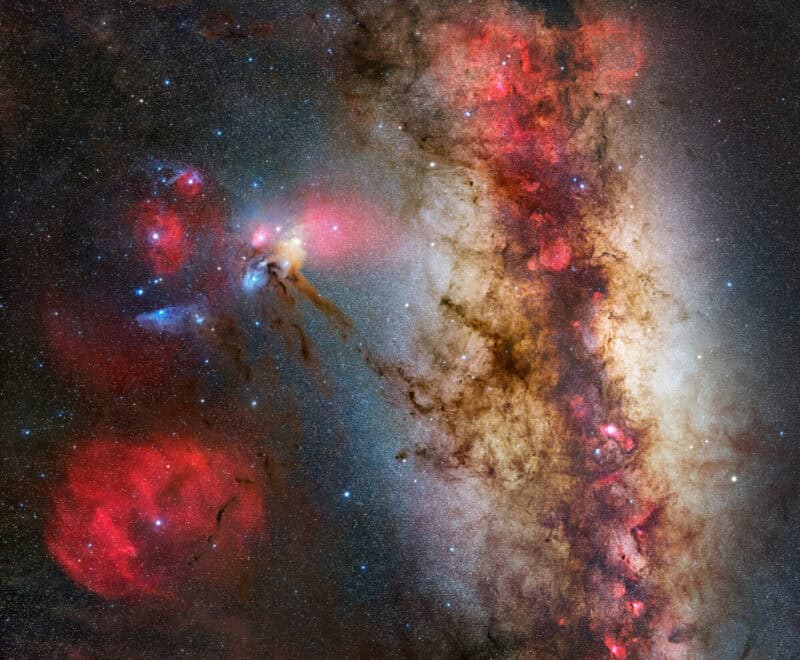
“One of the biggest things you must learn is that you should start to think like the pros”
What do you do for post-processing?
My workflow is a bit different from most people:
- For stacking, calibration and preprocessing I use Astro Pixel Processor.
- After that I go to Pixinsight to do stretching, noise reduction and other steps.
- When I’m done with my “basic stuff” I move over to Photoshop to do my final touches.
Sometimes I go also back to Pixinsight, so its mixed bag and depends on the image.
All these are subscription based or just paid software, here are a few free alternatives:
- Siril – for stacking and processing
- DeepSkyStacker – probably the most well-known stacking software out there
- GIMP – for processing
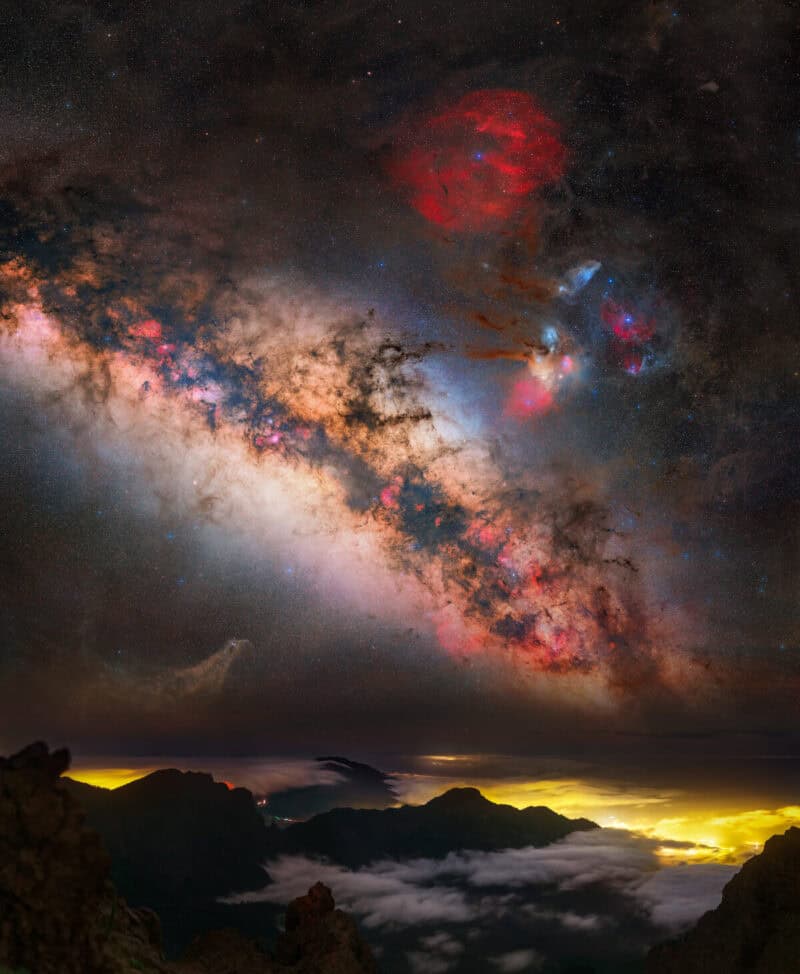
“I watched A LOT of YouTube content!”
How did you learn astrophotography?
I learned through inhaling everything I could basically.
I watched A LOT of YouTube content about both deep sky and landscape astrophotography and learned the basics.
All the image processing was learned by just digging through endless forum posts, hidden pdfs or tutorials on smaller websites, YouTube content or just contacting friends or like-minded people to talk about specific topics.
One of the biggest things you must learn is that you should start to think like the pros – how and why do they process an image like they do, etc.
These days it’s possible to get all the knowledge for free on YouTube. The problem is that you don’t know what you have to look/search for, and that only comes from experience…
Here are some YouTube channels that helped me a lot over the years:
- Alyn Wallace (R.I.P my friend)
- Trevor Jones
- Nico Carver
- Frank Sackenheim (German)
- Adam Block
- The Astro Imaging Channel

About You – Jakob Sahner
My name is Jakob Sahner, I am an astrophotographer from the Black Forest. I grew up in the area around Freiburg in a small town in the “Markgräflerland”.
I got into photography by chance and now I do it out of passion!
I started in 2017 when I did an apprenticeship as a photo and media technology assistant.
Initially, I had no connection to astrophotography, but I was looking for photography tutorials on YouTube and a video on astrophotography was suggested and I was immediately hooked.
Shortly afterwards, I tried to take pictures of the starry sky. This allowed me to gain my first experiences and learn from my mistakes.
I have learned a lot on my journey, met many people and visited many places, from Iceland to the Alps to La Palma (Canary Islands) and there are still many places on my list!
People can follow me here:




Marvellous wonderful, amazing photos.🌈🌟🌟🌟🌙🌙🌙
Thanks Syliva!